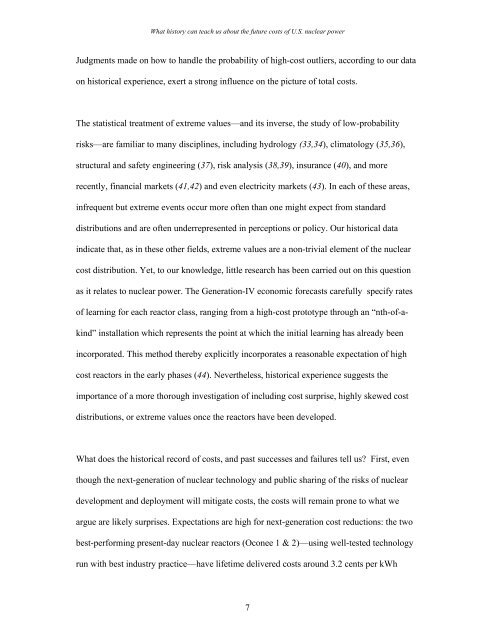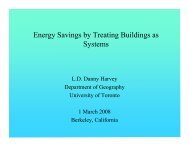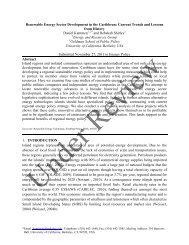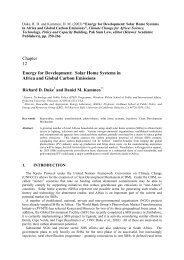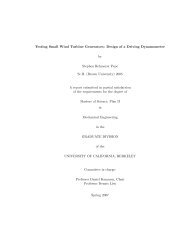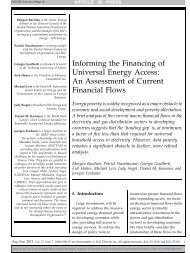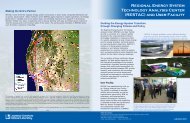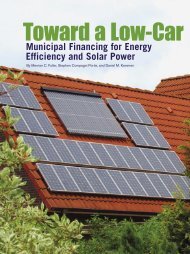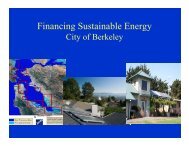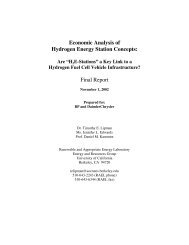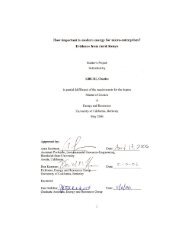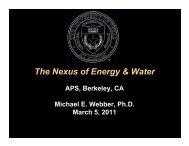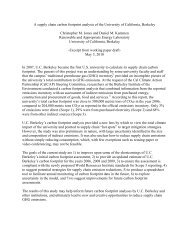What history can teach us about the future costs of U.S. nuclear ...
What history can teach us about the future costs of U.S. nuclear ...
What history can teach us about the future costs of U.S. nuclear ...
- No tags were found...
Create successful ePaper yourself
Turn your PDF publications into a flip-book with our unique Google optimized e-Paper software.
<strong>What</strong> <strong>history</strong> <strong>can</strong> <strong>teach</strong> <strong>us</strong> <strong>about</strong> <strong>the</strong> <strong>future</strong> <strong>costs</strong> <strong>of</strong> U.S. <strong>nuclear</strong> powerJudgments made on how to handle <strong>the</strong> probability <strong>of</strong> high-cost outliers, according to our dataon historical experience, exert a strong influence on <strong>the</strong> picture <strong>of</strong> total <strong>costs</strong>.The statistical treatment <strong>of</strong> extreme values—and its inverse, <strong>the</strong> study <strong>of</strong> low-probabilityrisks—are familiar to many disciplines, including hydrology (33,34), climatology (35,36),structural and safety engineering (37), risk analysis (38,39), insurance (40), and morerecently, financial markets (41,42) and even electricity markets (43). In each <strong>of</strong> <strong>the</strong>se areas,infrequent but extreme events occur more <strong>of</strong>ten than one might expect from standarddistributions and are <strong>of</strong>ten underrepresented in perceptions or policy. Our historical dataindicate that, as in <strong>the</strong>se o<strong>the</strong>r fields, extreme values are a non-trivial element <strong>of</strong> <strong>the</strong> <strong>nuclear</strong>cost distribution. Yet, to our knowledge, little research has been carried out on this questionas it relates to <strong>nuclear</strong> power. The Generation-IV economic forecasts carefully specify rates<strong>of</strong> learning for each reactor class, ranging from a high-cost prototype through an “nth-<strong>of</strong>-akind”installation which represents <strong>the</strong> point at which <strong>the</strong> initial learning has already beenincorporated. This method <strong>the</strong>reby explicitly incorporates a reasonable expectation <strong>of</strong> highcost reactors in <strong>the</strong> early phases (44). Never<strong>the</strong>less, historical experience suggests <strong>the</strong>importance <strong>of</strong> a more thorough investigation <strong>of</strong> including cost surprise, highly skewed costdistributions, or extreme values once <strong>the</strong> reactors have been developed.<strong>What</strong> does <strong>the</strong> historical record <strong>of</strong> <strong>costs</strong>, and past successes and failures tell <strong>us</strong>? First, eventhough <strong>the</strong> next-generation <strong>of</strong> <strong>nuclear</strong> technology and public sharing <strong>of</strong> <strong>the</strong> risks <strong>of</strong> <strong>nuclear</strong>development and deployment will mitigate <strong>costs</strong>, <strong>the</strong> <strong>costs</strong> will remain prone to what weargue are likely surprises. Expectations are high for next-generation cost reductions: <strong>the</strong> twobest-performing present-day <strong>nuclear</strong> reactors (Oconee 1 & 2)—<strong>us</strong>ing well-tested technologyrun with best ind<strong>us</strong>try practice—have lifetime delivered <strong>costs</strong> around 3.2 cents per kWh7


